Basics of Foundation Construction

The Basics of Foundation Construction: Deep Foundations, Soil Testing, and Site Preparation
Foundations are the essential support system for any building. They transfer the weight of the structure to the ground, ensuring stability and safety. Foundations can be broadly categorized into two types: shallow and deep. This article focuses on deep foundations, which are necessary for large, heavy structures or when the surface soil is not strong enough to support the building. When embarking on any construction project, one of the most critical considerations is the foundation.
 A building’s foundation is the underlying support system that bears the weight of the structure and ensures its stability. Among the two primary categories of foundations—shallow and deep—deep foundations play a crucial role, particularly for large, heavy buildings or in areas where the surface soil lacks sufficient strength. Understanding the basics of deep foundation construction, the importance of soil testing, and the necessity of thorough site preparation is essential for ensuring the safety and longevity of a building.
A building’s foundation is the underlying support system that bears the weight of the structure and ensures its stability. Among the two primary categories of foundations—shallow and deep—deep foundations play a crucial role, particularly for large, heavy buildings or in areas where the surface soil lacks sufficient strength. Understanding the basics of deep foundation construction, the importance of soil testing, and the necessity of thorough site preparation is essential for ensuring the safety and longevity of a building.
Deep foundations are indispensable when dealing with challenging soil conditions or constructing massive structures like skyscrapers, bridges, or industrial facilities. Unlike shallow foundations, which distribute the load near the surface, deep foundations extend far below the ground to transfer the building’s weight to more stable soil or rock layers. This approach provides the necessary support and stability for structures built on less reliable soil.
The selection of an appropriate deep foundation type—whether it be piles, caissons, drilled piers, or deep footings—depends on several factors, including soil properties, load requirements, and the specific needs of the project. Each type of deep foundation has its unique characteristics and construction methods, tailored to different environmental conditions and structural demands. Proper foundation selection is critical to the success of the project, making soil testing an indispensable part of the process.
Soil testing is the bedrock of foundation design. By conducting comprehensive soil tests, engineers can determine the soil’s properties, identify potential problems, and choose the most suitable foundation type. This process helps in predicting how the soil will behave under the weight of the building and ensures that the foundation will perform as intended. Ignoring soil testing can lead to catastrophic consequences, including foundation failure and structural collapse.
Equally important is the preparation of the construction site. Site preparation involves clearing the area, excavating to the required depths, stabilizing the soil, and managing water effectively. These steps are essential for creating a suitable environment for the foundation and preventing future issues that could compromise the building’s integrity.
In summary, the construction of deep foundations is a complex but vital aspect of building projects that require special attention to detail. By understanding the basics of deep foundations, the critical role of soil testing, and the importance of meticulous site preparation, builders and engineers can ensure the creation of safe, stable, and long-lasting structures. This knowledge is fundamental to the success of any construction endeavor, highlighting the intricate interplay between engineering principles and practical application in the field.
What Are Deep Foundations?
Deep foundations are structural elements that extend deep into the ground to transfer the load of a building to more stable soil or rock layers far below the surface. This is essential in situations where the upper soil layers are not strong enough to support the weight of the structure, or when the building itself is exceptionally tall or heavy. The primary purpose of deep foundations is to ensure the stability and safety of the structure by anchoring it to more reliable subsurface conditions.
The choice of a deep foundation type depends on various factors, including the type of soil, the load-bearing requirements of the structure, and environmental considerations. The most common types of deep foundations are piles, caissons, drilled piers, and sometimes, deep footings or basements. Each type has unique characteristics and construction methods, making them suitable for different scenarios.
Piles are long, slender columns made from materials such as concrete, steel, or wood. They are driven or drilled into the ground to transfer the load of the building to deeper, more stable soil or rock. Piles can be categorized into two main types: end-bearing piles, which transfer load to a solid layer of rock or dense soil at the bottom, and friction piles, which rely on the frictional resistance between the pile surface and the surrounding soil to carry the load. Piles are commonly used in areas with weak surface soils and for large-scale structures such as bridges and high-rise buildings.
Caissons, also known as drilled shafts, are large, hollow, cylindrical structures made of concrete. They are constructed by drilling a large hole into the ground, placing a reinforcing cage inside, and then filling it with concrete. Caissons are typically used for very heavy structures, including bridges, towers, and offshore platforms. Their large diameter and depth allow them to carry substantial loads by bearing on strong soils or rock at the bottom.
Drilled piers are similar to caissons but usually smaller in diameter. They are constructed by drilling a hole into the ground, inserting a reinforcing steel cage, and filling the hole with concrete. Drilled piers are used for medium to large buildings and structures, offering a strong and stable foundation. The depth and diameter of drilled piers can be adjusted to suit specific load requirements and soil conditions.
In some cases, deep foundations may include basements or deep footings where the building itself extends below ground level. This type of foundation integrates part of the structure’s usable space into the foundation system. For example, basements can serve as storage or utility areas while providing additional stability to the building by extending deeper into the ground.
Deep foundations are crucial for ensuring the structural integrity of buildings, particularly in challenging soil conditions or for heavy constructions. They anchor the building to deeper, more stable layers, distributing the load more effectively and preventing settlement issues that can compromise the safety and durability of the structure. Understanding the different types of deep foundations and their applications is essential for selecting the appropriate foundation system for any given construction project
 Types of Deep Foundations:
Types of Deep Foundations:
1. Piles in Deep Foundations
Piles are a fundamental type of deep foundation widely used in construction to support structures in areas where surface soils lack the necessary strength to bear the load. These long, slender columns are driven or drilled deep into the ground to transfer the weight of a building to more stable soil or rock layers below. Piles are versatile and can be made from a variety of materials, including concrete, steel, and wood, each chosen based on the specific requirements of the project and the ground conditions.
The primary function of piles is to bypass weak or unstable surface soils and anchor the structure in deeper, more reliable layers. This makes them essential for large, heavy buildings, bridges, and other infrastructure projects, particularly in areas with soft, compressible, or expansive soils. Piles ensure that the load is distributed effectively and prevent excessive settlement or shifting that could compromise the structural integrity of the building.
Piles can be classified into two main categories: end-bearing piles and friction piles. End-bearing piles function like columns that transfer the load directly to a firm layer of rock or dense soil at their tip. These piles are particularly effective when a solid stratum is located at a reasonable depth. The entire load of the building is supported by the strong layer at the bottom of the pile, making them highly efficient in suitable conditions.
Friction piles, on the other hand, rely on the frictional resistance between the pile surface and the surrounding soil to carry the load. These piles are used when no solid layer is within practical reach. Instead of transferring the load to a single point, friction piles distribute it along the length of the pile through shear stresses between the pile and the soil. This type of pile is particularly useful in areas with deep deposits of soft or loose soil.
The construction process for piles varies depending on the type and material. Driven piles are pre-manufactured from steel, concrete, or wood and are hammered into the ground using pile drivers. This method is noisy and can cause vibrations but is effective in many soil conditions. Bored piles or drilled shafts involve drilling a hole into the ground, placing a reinforcing steel cage, and then filling the hole with concrete. This method is quieter and causes less vibration, making it suitable for urban areas or sites with sensitive structures nearby.
Concrete piles are commonly used due to their strength and durability. They can be precast or cast-in-situ. Precast concrete piles are manufactured off-site and transported to the construction site, while cast-in-situ piles are poured and cured in place. Steel piles offer high load-bearing capacity and are suitable for driving through hard soils or rock. They can be H-shaped, tubular, or box-shaped, each providing different advantages in terms of strength and resistance to bending. Wooden piles, although less common today, are still used in certain conditions, particularly for lighter structures or in areas where other materials might corrode.
Piles are crucial for ensuring the stability and safety of structures, especially in challenging soil conditions. They provide a reliable foundation by transferring loads to deeper, more stable layers, preventing settlement, and accommodating various soil types and load requirements. Understanding the different types of piles and their construction methods helps in selecting the appropriate foundation system for any given project, ensuring the longevity and integrity of the structure.
2. Caissons in Deep Foundations
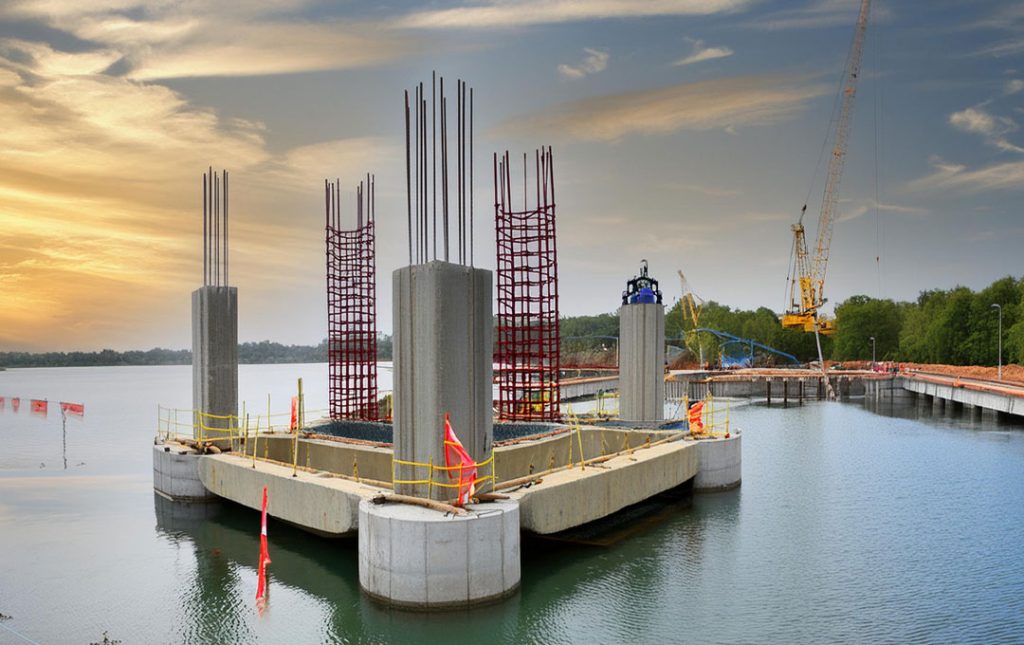 Caissons, also known as drilled shafts or piers, are a type of deep foundation used to support large structures where surface soils are not strong enough to bear the load. They are large, cylindrical structures made from reinforced concrete, constructed by drilling a deep hole into the ground and then filling it with concrete. Caissons are designed to reach stable soil or rock layers deep below the surface, providing a solid and stable foundation for heavy buildings, bridges, and other significant infrastructure projects.
Caissons, also known as drilled shafts or piers, are a type of deep foundation used to support large structures where surface soils are not strong enough to bear the load. They are large, cylindrical structures made from reinforced concrete, constructed by drilling a deep hole into the ground and then filling it with concrete. Caissons are designed to reach stable soil or rock layers deep below the surface, providing a solid and stable foundation for heavy buildings, bridges, and other significant infrastructure projects.
The primary function of caissons is to transfer the load of the structure to deeper, more stable subsurface layers, ensuring the stability and durability of the building. This type of foundation is particularly effective in conditions where the upper soil layers are weak, compressible, or prone to shifting. By anchoring the structure in stronger layers, caissons prevent excessive settlement and provide reliable support.
The construction process of caissons involves several critical steps. Initially, a large hole is drilled into the ground using specialized drilling equipment. The diameter and depth of the hole are determined by the load-bearing requirements and the soil conditions. Once the hole is drilled, a reinforcing steel cage is placed inside to provide additional strength and stability. The hole is then filled with concrete, which hardens and forms a solid, stable foundation.
There are different types of caissons, each suited for specific conditions and requirements. Open caissons are constructed by excavating the soil within the caisson as it is sunk into the ground. This method is often used in waterlogged areas or when constructing underwater foundations, such as for bridges or piers. Pneumatic caissons are used in conditions where there is significant water pressure or unstable soil. These caissons have airtight working chambers, allowing workers to excavate the soil under compressed air conditions, which keeps water and loose soil at bay.
Another type is the floating caisson, which is prefabricated and then floated to the construction site. Once in position, the caisson is sunk by filling it with concrete or other heavy materials. This method is commonly used for constructing foundations in water bodies, such as harbors or offshore platforms. Drilled caissons are created by drilling a hole into the ground, similar to the general method described, and are typically used for building foundations on land.
Caissons offer several advantages, making them a preferred choice for certain construction projects. They provide a high load-bearing capacity, which is essential for supporting large, heavy structures. The construction process allows for careful control of the dimensions and reinforcement, ensuring a strong and stable foundation. Additionally, caissons can be constructed to significant depths, reaching stable soil or rock layers that might be inaccessible with other foundation types.
One of the key benefits of caissons is their ability to minimize settlement and differential movement. Because they transfer the load to deeper, more stable layers, caissons prevent uneven settling, which can lead to structural damage or failure. This makes them particularly suitable for projects where precise and reliable support is critical.
3. Drilled Piers in Deep Foundations
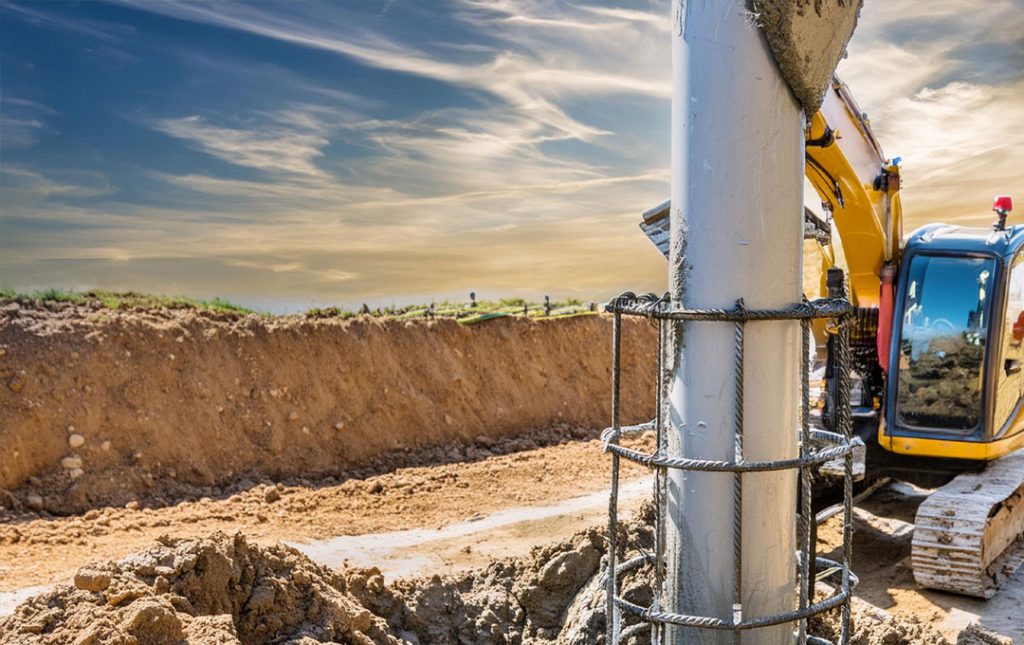 Drilled piers, also known as drilled shafts, are a type of deep foundation widely utilized in construction to support heavy structures by transferring their loads to deeper, more stable soil or rock layers. These cylindrical concrete shafts are created by drilling a hole into the ground and then filling it with reinforced concrete. Drilled piers are favored for their high load-bearing capacity and versatility, making them suitable for various types of buildings and infrastructure projects.
Drilled piers, also known as drilled shafts, are a type of deep foundation widely utilized in construction to support heavy structures by transferring their loads to deeper, more stable soil or rock layers. These cylindrical concrete shafts are created by drilling a hole into the ground and then filling it with reinforced concrete. Drilled piers are favored for their high load-bearing capacity and versatility, making them suitable for various types of buildings and infrastructure projects.
The primary purpose of drilled piers is to provide a stable and reliable foundation in conditions where surface soils are weak, compressible, or prone to settlement. By extending deep into the ground, drilled piers anchor the structure in more stable subsurface layers, preventing excessive settlement and ensuring the integrity and longevity of the building. This is particularly important for large, heavy structures such as skyscrapers, bridges, and industrial facilities.
The construction process for drilled piers involves several key steps. First, a hole is drilled into the ground using specialized drilling equipment. The diameter and depth of the hole are determined by the specific load requirements and soil conditions of the site. Once the hole is drilled, a reinforcing steel cage is placed inside to enhance the strength and stability of the pier. The hole is then filled with concrete, which hardens to form a solid, load-bearing foundation.
Drilled piers can be constructed using various techniques, each suited to different site conditions and requirements. Dry construction is employed when the groundwater level is below the depth of the drilled hole and the soil is stable enough to prevent collapse. In this method, the hole is drilled, the reinforcing cage is inserted, and concrete is poured without the need for additional support. Wet construction is used when groundwater or unstable soil conditions are present. This technique involves using a drilling fluid, such as bentonite slurry, to stabilize the hole and prevent collapse. The slurry is displaced by the concrete during the pouring process.
Another technique is the cased construction method, which involves placing a temporary steel casing into the hole to prevent soil collapse and water ingress. The casing is removed as concrete is poured, ensuring the integrity of the pier. This method is particularly useful in areas with loose or sandy soils.
Drilled piers offer several advantages that make them a preferred choice for many construction projects. One significant benefit is their high load-bearing capacity, which can support substantial structural loads. The depth and diameter of drilled piers can be customized to meet specific load requirements, providing flexibility in design. Additionally, drilled piers can be constructed to significant depths, reaching stable soil or rock layers that might be inaccessible with other foundation types.
The ability to minimize settlement is another key advantage of drilled piers. By anchoring the structure in deeper, more stable layers, drilled piers reduce the risk of uneven settlement, which can cause structural damage. This makes them ideal for projects where precise and reliable support is critical.
Moreover, the construction process for drilled piers is relatively quiet and causes minimal vibrations compared to other deep foundation methods like driven piles. This makes them suitable for urban areas or sites near existing structures where noise and vibrations could be problematic.
4. Basements and Deep Footings in Deep Foundations
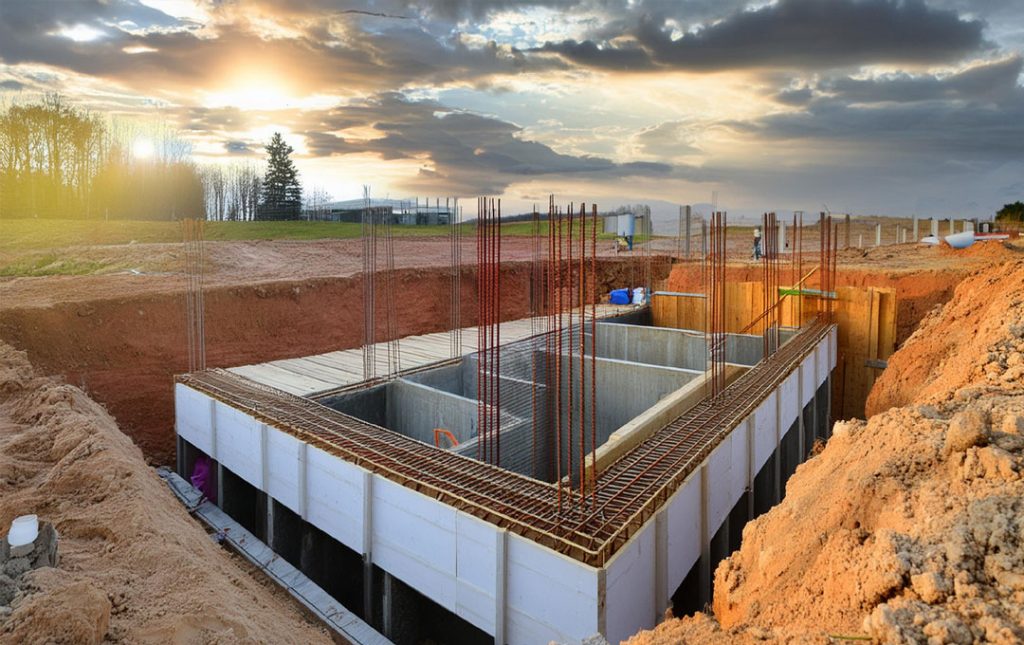 Basements and deep footings are unique types of deep foundations that not only provide structural support but also add functional space to buildings. These foundations extend below the ground level, integrating part of the building’s usable area into the foundation system. They are particularly effective for structures requiring extensive below-ground space or when surface soil conditions necessitate deeper anchorage for stability.
Basements and deep footings are unique types of deep foundations that not only provide structural support but also add functional space to buildings. These foundations extend below the ground level, integrating part of the building’s usable area into the foundation system. They are particularly effective for structures requiring extensive below-ground space or when surface soil conditions necessitate deeper anchorage for stability.
Basements serve a dual purpose in building construction. They act as deep foundations, providing support by extending the structure’s footprint deeper into the ground, and offer additional usable space for storage, utilities, or living areas. Basements are constructed by excavating a large area to the desired depth, followed by the construction of walls and floors using reinforced concrete or masonry. The basement walls and floor work together to support the load of the structure above, distributing it to deeper, more stable soil layers.
One of the primary advantages of basements is their ability to provide significant additional space without increasing the building’s footprint. This is especially beneficial in urban areas where land is scarce and expensive. The extra space can be used for various purposes, such as parking, storage, mechanical rooms, or even living spaces, making basements a versatile and valuable component of the building.
In addition to basements, deep footings are another form of deep foundation that extends below the surface to reach stable soil or rock layers. Unlike standard shallow footings, which distribute the load near the surface, deep footings are designed to transfer the building’s load to deeper levels. This is achieved by excavating to a greater depth and constructing a large, reinforced concrete footing that anchors the structure to stable subsurface layers.
Deep footings are particularly useful in areas with weak or expansive surface soils that cannot adequately support the weight of the building. By reaching more stable ground, deep footings prevent issues like differential settlement and soil shifting, which can lead to structural damage. These foundations are commonly used for heavy structures such as high-rise buildings, industrial facilities, and bridges.
The construction of deep footings involves excavating a trench or pit to the required depth, placing a reinforcing steel cage, and then pouring concrete to form a solid and stable base. The size and depth of the footing are determined by the load requirements of the structure and the soil conditions at the site. Proper design and construction of deep footings ensure that the building’s load is effectively transferred to stable subsurface layers, maintaining the structure’s integrity over time.
Both basements and deep footings offer several benefits, making them essential components in certain construction scenarios. Basements provide valuable additional space and enhance the building’s functionality, while also contributing to the structural support by anchoring the building deeper into the ground. Deep footings, on the other hand, are crucial for ensuring stability in challenging soil conditions by transferring the load to more reliable layers below the surface.
The Importance of Soil Testing in Deep Foundations
 Soil testing is a critical component of the construction process, especially when it comes to designing and implementing deep foundations. The stability and safety of a building heavily depend on the quality and characteristics of the soil on which it is built. Soil testing provides essential information about the soil’s properties, enabling engineers to make informed decisions about the type and design of the foundation necessary to support the structure adequately.
Soil testing is a critical component of the construction process, especially when it comes to designing and implementing deep foundations. The stability and safety of a building heavily depend on the quality and characteristics of the soil on which it is built. Soil testing provides essential information about the soil’s properties, enabling engineers to make informed decisions about the type and design of the foundation necessary to support the structure adequately.
Understanding Soil Properties: Soil testing involves a series of procedures that determine the physical and chemical properties of the soil at a construction site. Tests measure attributes such as soil type, density, moisture content, shear strength, and compaction. These properties significantly influence how the soil will behave under the weight of a building. For instance, sandy soils may drain well but might not provide the same load-bearing capacity as clay soils, which can support heavy loads but might swell and shrink with moisture changes.
Identifying Load-Bearing Capacity: One of the primary purposes of soil testing is to assess the load-bearing capacity of the soil. This information is crucial for determining the depth and type of deep foundation required. If the surface soil is weak or compressible, deeper foundations like piles or caissons may be necessary to transfer the load to more stable soil or rock layers. By understanding the soil’s bearing capacity, engineers can design foundations that ensure the building’s weight is adequately supported, preventing settlement and potential structural failure.
Detecting Soil Problems: Soil testing can reveal potential issues that could affect the foundation’s performance. Problems such as soil instability, high groundwater levels, expansive clays, and the presence of organic material can pose significant risks. Expansive soils, for example, can swell when wet and shrink when dry, leading to ground movement that can damage the foundation. By identifying these issues early, engineers can design appropriate mitigation strategies, such as soil stabilization, drainage systems, or selecting a different type of foundation.
Ensuring Safety and Compliance: Building codes and regulations often require comprehensive soil testing to ensure the safety and stability of structures. Compliance with these standards is not only a legal requirement but also a critical aspect of ensuring the long-term durability of the building. Soil testing provides the data needed to meet these standards, giving confidence to builders, regulators, and occupants that the foundation will perform as expected.
Optimizing Foundation Design: Accurate soil data allows for the optimization of foundation design, which can lead to cost savings and enhanced performance. By understanding the soil conditions, engineers can avoid over designing or under designing the foundation. Overdesigning can lead to unnecessary construction costs, while under designing can compromise the building’s stability. Optimized designs ensure that resources are used efficiently, and the foundation is tailored to the site’s specific needs.
Preventing Structural Failures: Soil testing plays a crucial role in preventing structural failures that can result from inadequate foundation support. Historical cases of foundation failure often highlight the importance of thorough soil investigation. For example, the Leaning Tower of Pisa’s famous tilt is a result of poor soil conditions and inadequate foundation design. Modern soil testing methods help prevent such issues by providing detailed insights into the soil’s behavior and ensuring that foundations are designed to accommodate any potential problems
Site Preparation for Deep Foundations
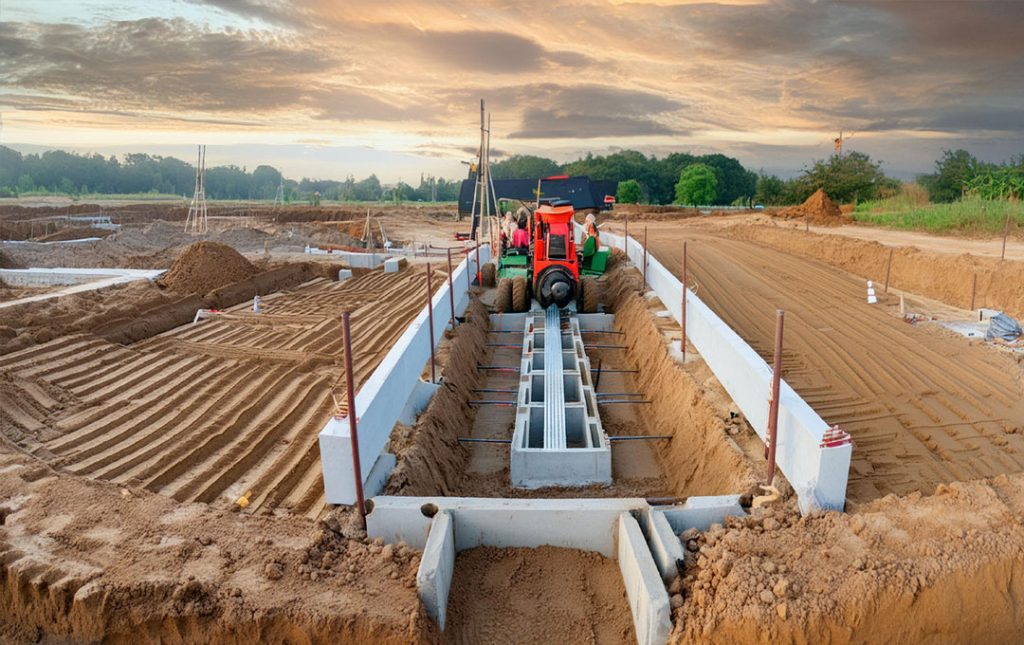 Site preparation is a crucial phase in the construction process, especially for deep foundations. This phase involves a series of steps to ensure the site is ready for the foundation work, providing a stable and secure base for the structure. Proper site preparation minimizes risks, enhances the performance of the foundation, and ensures the long-term stability of the building.
Site preparation is a crucial phase in the construction process, especially for deep foundations. This phase involves a series of steps to ensure the site is ready for the foundation work, providing a stable and secure base for the structure. Proper site preparation minimizes risks, enhances the performance of the foundation, and ensures the long-term stability of the building.
Clearing and Grading the Site: The first step in site preparation is clearing the land of any vegetation, debris, and existing structures that might interfere with construction. This is followed by grading, which involves leveling the ground to create a smooth and even surface. Proper grading ensures effective drainage and prevents water from pooling around the foundation, which can lead to soil erosion and instability.
Conducting Soil Testing and Analysis: Before any excavation begins, comprehensive soil testing is conducted to determine the soil’s properties and load-bearing capacity. This information is critical for designing the foundation and identifying any potential issues that need to be addressed during site preparation. Soil testing can reveal the presence of weak or unstable soils, high groundwater levels, and other factors that might affect the foundation’s performance.
Excavation: Once the site is cleared and graded, excavation begins. The depth and extent of excavation depend on the type of deep foundation being used, such as piles, caissons, or drilled piers. Excavation must be precise to ensure that the foundation reaches the stable soil or rock layers identified during soil testing. During this phase, it is essential to manage the excavated material and ensure that the excavation is performed safely and efficiently.
Stabilizing the Soil: In some cases, the soil may need to be stabilized to improve its load-bearing capacity and prevent settlement. Soil stabilization techniques include compaction, which increases the soil’s density, and the addition of stabilizing agents such as lime, cement, or geotextiles. These methods enhance the soil’s strength and stability, creating a more reliable base for the foundation.
Installing Drainage Systems: Effective drainage is crucial to prevent water from accumulating around the foundation, which can lead to soil erosion, swelling, and other issues. Installing drainage systems, such as French drains, perforated pipes, or drainage mats, helps manage water flow and keeps the foundation dry. Proper drainage design ensures that water is directed away from the foundation, maintaining the integrity of the soil and the stability of the structure.
Setting Up Formwork and Reinforcement: For certain types of deep foundations, such as caissons and drilled piers, setting up formwork and reinforcement is a critical step in site preparation. Formwork involves creating molds that shape the concrete as it is poured, while reinforcement typically involves placing steel cages or rebar within the excavation to strengthen the foundation. This step ensures that the foundation will be strong and durable, capable of supporting the load of the structure.
Managing Groundwater: High groundwater levels can pose significant challenges during site preparation for deep foundations. Dewatering techniques, such as pumping or installing wells, may be necessary to lower the groundwater level and keep the excavation dry. Managing groundwater is essential to prevent water from entering the excavation and compromising the stability of the foundation.
Conducting Inspections and Quality Control: Throughout the site preparation process, regular inspections and quality control measures are essential to ensure that all steps are performed correctly and to the required standards. This includes verifying the soil’s condition after stabilization, checking the accuracy of the excavation, and inspecting the formwork and reinforcement setup. Quality control helps identify and address any issues early, ensuring that the foundation will be constructed on a solid and stable base.
Conclusion
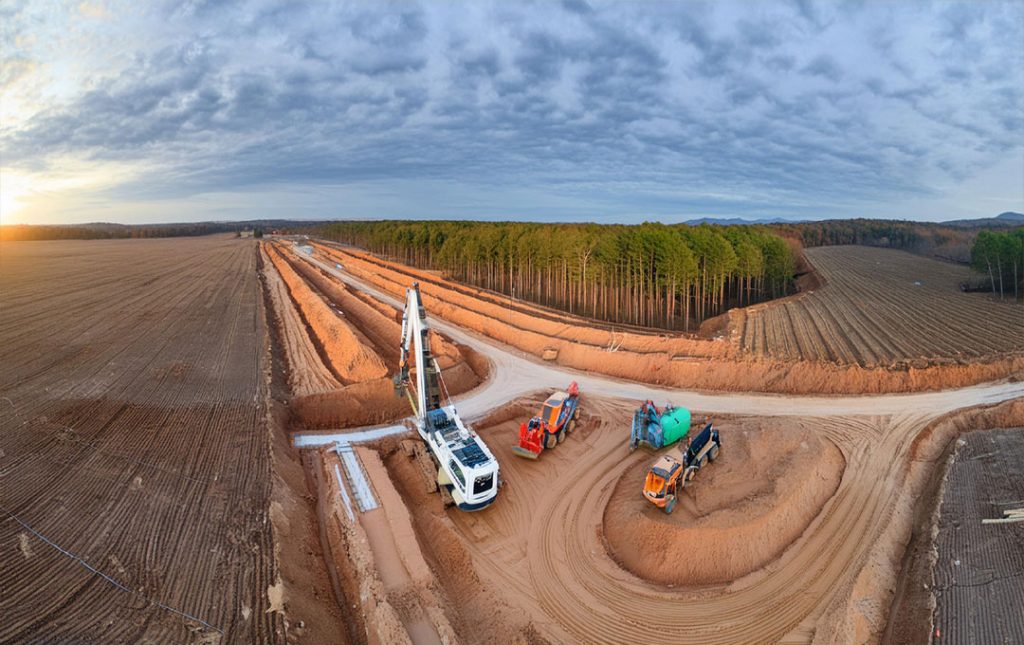 The construction of deep foundations is a fundamental aspect of ensuring the stability and longevity of heavy and tall structures, particularly in areas with challenging soil conditions. Deep foundations, such as piles, caissons, drilled piers, and basements, play a crucial role in transferring the load of a building to deeper, more stable soil or rock layers. Each type of deep foundation offers unique advantages and is chosen based on specific site conditions and structural requirements.
The construction of deep foundations is a fundamental aspect of ensuring the stability and longevity of heavy and tall structures, particularly in areas with challenging soil conditions. Deep foundations, such as piles, caissons, drilled piers, and basements, play a crucial role in transferring the load of a building to deeper, more stable soil or rock layers. Each type of deep foundation offers unique advantages and is chosen based on specific site conditions and structural requirements.
Soil testing is an essential step in the construction process, providing critical information about the soil’s properties and load-bearing capacity. This data is indispensable for designing appropriate foundations, mitigating potential soil-related issues, and ensuring compliance with building codes and regulations. Through comprehensive soil analysis, engineers can optimize foundation design, prevent structural failures, and enhance the overall safety and performance of the building.
Site preparation is another vital component of deep foundation construction. It involves clearing and grading the site, conducting soil stabilization, managing groundwater, and installing effective drainage systems. Proper site preparation ensures a stable base for the foundation, minimizing risks associated with soil instability, erosion, and water damage. By following meticulous site preparation procedures, construction teams can create a reliable and durable foundation that supports the structure’s long-term stability.
In summary, the basics of foundation construction encompass the critical areas of deep foundation types, soil testing, and site preparation. Each of these elements plays a significant role in ensuring that buildings are safe, stable, and capable of withstanding the loads and environmental conditions they will encounter. Understanding and implementing these foundational principles are key to successful construction projects that stand the test of time.


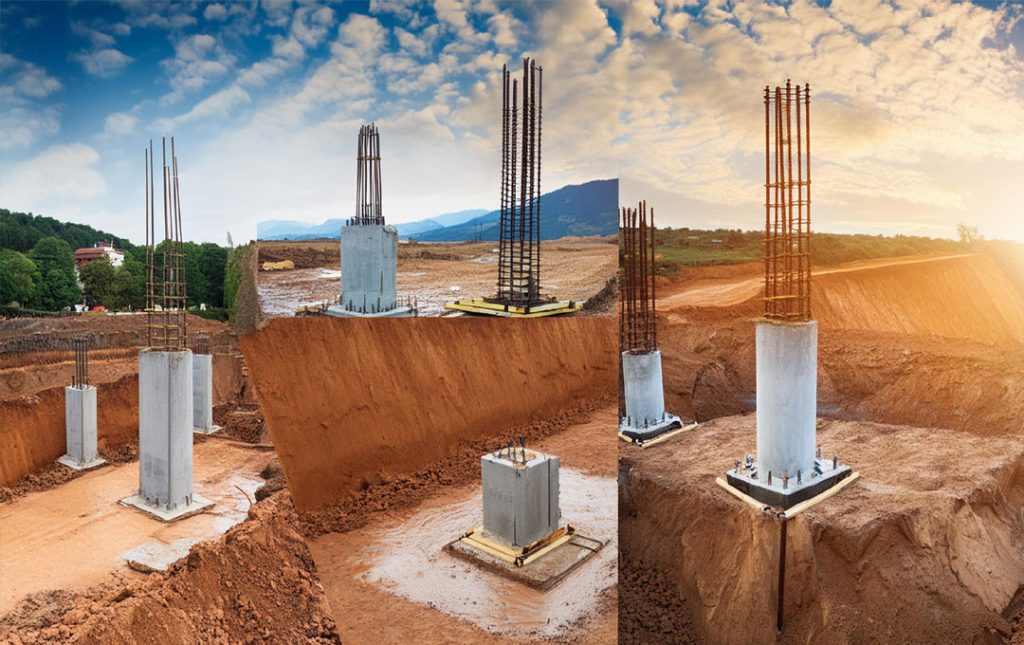 Types of Deep Foundations:
Types of Deep Foundations:

[…] know that no two construction sites are the same, so they start with a thorough site inspection before even thinking about numbers. […]